Vole Deterrents: Strategies for Effective Management
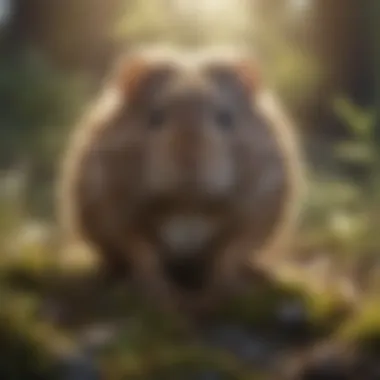
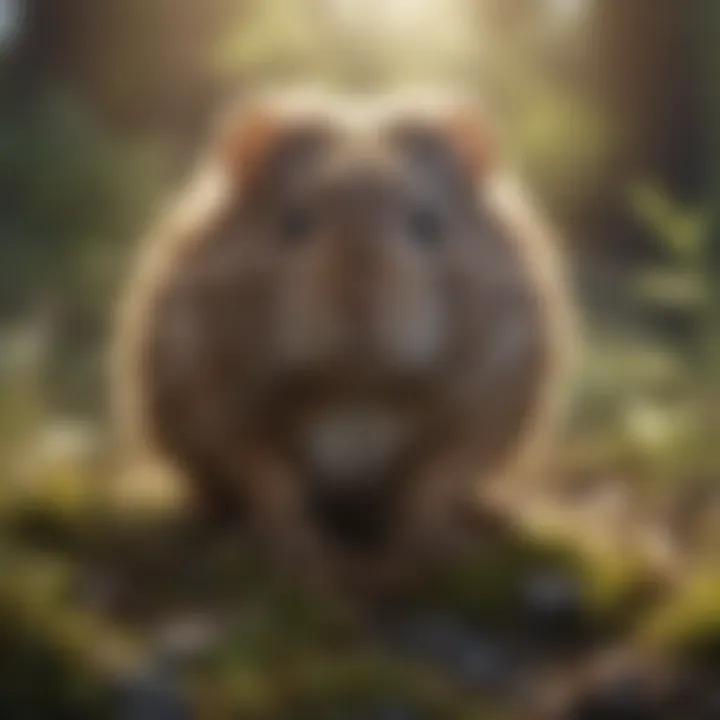
Intro
Understanding how to manage vole populations is crucial for homeowners and individuals engaged in gardening or landscaping. This guide aims to explore various vole deterrents and their implications for pest management. By examining vole behavior, life cycle, and effective strategies, readers will gain insights to protect their properties from these persistent pests.
Understanding the Pest
Identification
Voles are small rodent species, often confused with mice. They have stocky bodies, short tails, and small ears. The most common types include the meadow vole and the pine vole. Distinguishing these species is important for choosing appropriate deterrent strategies. Voles are typically brown or gray, and their size ranges from 4 to 10 inches, including the tail. Observing their habits, such as tunneling and chewing patterns, can also aid in their identification.
Life Cycle
Voles have a rapid reproductive cycle, which contributes to their population growth. Adult voles can reproduce from spring through fall, often producing multiple litters each year. A single female can give birth to five to ten young per litter. These young are weaned within a few weeks and reach reproductive maturity in about three months. Understanding this life cycle is essential for implementing effective management strategies.
As noted in studies, "The rapid breeding capability of voles makes them a resilient pest species in agricultural and residential settings." Their survival rate allows populations to rebound quickly, thus making prevention essential.
Pest Prevention Strategies
Environment Modification
One effective method to deter voles is through environmental modification. Homeowners can reduce the attractiveness of their landscape by:
- Maintaining vegetation: Keeping grass and weeds trimmed short reduces cover and nesting sites for voles.
- Removing debris: Clearing piles of wood, stones, and other debris helps eliminate potential habitats.
- Using mulch: Applying certain types of mulch, such as cedar, can deter voles due to their scent.
Physical Barriers
Implementing physical barriers can also mitigate vole populations. Options include:
- Fencing: Installing wire mesh fencing about a foot underground can prevent voles from burrowing into gardens and landscapes.
- Planting barriers: Using thorny or scented plants may discourage voles from entering specific areas.
These strategies, when combined, can create an environment less favorable for voles.
Control Methods
Chemical Control
Although chemical solutions exist, they should be employed with caution. Rodenticides can be effective, but potential risks to non-target species must be considered. Always follow label directions and local regulations when using such products. It is advisable to consult professionals for effective and safe application.
Biological Control
Biological control methods can offer an alternative to chemical measures. These involve the introduction of natural predators. For example, attracting raptors, such as hawks and owls, can help keep vole populations in check. Providing appropriate perches and habitat can lure these birds to your property.
A well-balanced ecosystem often keeps pest populations under control naturally. Encouraging biodiversity is key to long-term management.
"Effective pest management not only focuses on removal but also emphasizes prevention and sustainability."
This holistic approach aligns with modern pest control philosophies, focusing on environmentally friendly methods.
Foreword to Voles
Understanding voles is essential for effective management in gardens and landscaping. Voles are small, burrowing rodents that can devastate plants and landscapes. Their presence creates significant problems for homeowners and gardeners, making it critical to be informed about their behavior, biology, and distribution. This section sets the foundation for developing effective strategies to deter voles.
Understanding Vole Biology
Voles belong to the family Cricetidae and are closely related to mice and rats. They have robust bodies and short tails. The most common species in North America include the meadow vole, the pine vole, and the water vole. Voles typically weigh between 30 to 200 grams, depending on the species.
Their diet consists mainly of grasses, roots, and tubers. Understanding what voles eat can inform the choice of plants in gardens to promote healthier growth in areas where voles are present. Voles breed quickly, with females able to produce multiple litters each year. This rapid reproduction increases their population and potential damage in a short period.
Habitats and Distribution of Voles
Voles inhabit a variety of environments ranging from grasslands to forests. They prefer areas with dense vegetation, which offers cover from predators. This characteristic makes gardens and lawns attractive to them, as they provide both food and shelter. In urban settings, voles can thrive in parks and landscaped areas, where human activity often disrupts their natural predators.
Their distribution is broad. Voles are found throughout North America, parts of Europe and Asia. Understanding where voles are likely to be found allows homeowners to take preemptive measures. By aware of the conditions that attract voles, owners can implement targeted strategies that minimize their risks and protect their beloved plants.
"Knowledge of vole biology and habitat increases the chances of successful deterrence."
In summary, comprehending the biology and habitats of voles is a fundamental aspect of managing them effectively. This knowledge allows homeowners to anticipate vole activity, address potential infestations early, and apply suitable deterrent strategies.
Importance of Vole Deterrents
Understanding the importance of vole deterrents is essential for any homeowner or gardener. Voles are small rodents that can cause significant damage to gardens, lawns, and various landscape plants. Their feeding habits lead to the destruction of root systems and the undermining of plants, which can result in costly losses. Effective vole management not only protects your garden and property but also promotes healthier ecosystems.
Impact on Gardens and Landscaping
Voles can be particularly harmful in gardens. They primarily feed on the roots of plants, tubers, and bulbs. If not managed properly, their activities can result in noticeable gaps and dead patches in your garden.
- Chewing on Roots: This feeding behavior disrupts the plants' ability to absorb nutrients and water, leading to poor growth or plant death.
- Tunneling Effects: Voles dig extensive tunnel systems underground, which can destabilize the soil structure. This poses risks not just for the plants but also for any foot traffic in the area.
- Disruption of Aesthetics: A garden’s beauty can quickly vanish when plants are damaged, leaving behind bare spots and unhealthy foliage.
To mitigate these issues, implementing vole deterrent strategies becomes crucial. Not only can it preserve the look of your garden, but it also enhances the overall health of your plants and reduces maintenance costs over time.
Consequences of Vole Infestation
A vole infestation can lead to various consequences that extend beyond your garden’s aesthetics. It is imperative to understand these repercussions to grasp why deterrents are so necessary.
- Economic Impact: Losses in crops can hit the pocket hard, especially for those managing larger gardens or agricultural spaces. A few voles can quickly multiply, exacerbating the economic burden.
- Biodiversity Effects: Voles affect much more than just cultivated plants. Their burrowing can lead to the loss of native species, disrupting local ecosystems.
- Pest Attraction: Voles can attract predators and other pests, creating deeper ecological imbalances in your garden. This may, in turn, introduce further management challenges.
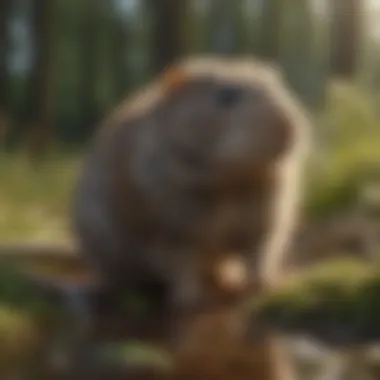
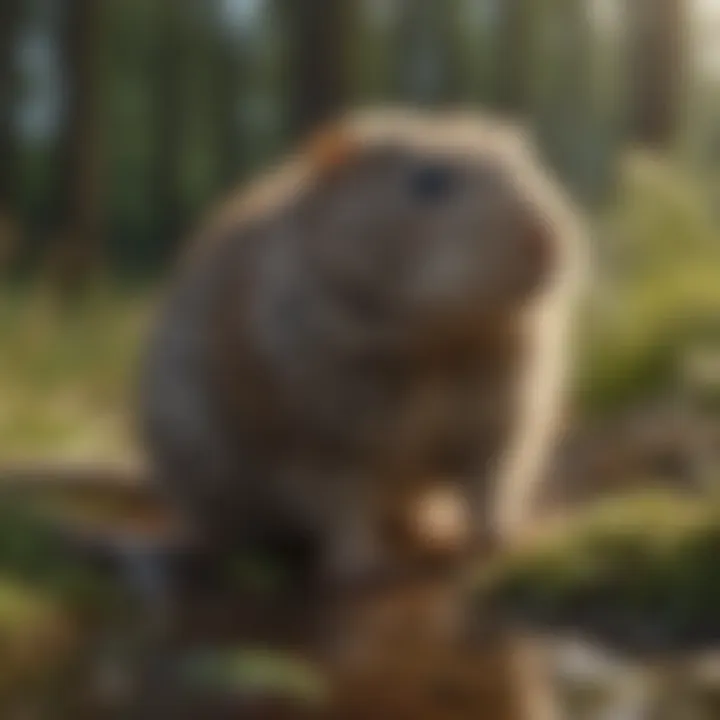
"Vole control is not just about saving plants; it is about maintaining an ecosystem where plants, animals, and humans can coexist."
Homeowners should be mindful of the consequences that come with ignoring vole presence and take proactive measures to control their populations effectively. By understanding the impact voles have, it highlights the critical nature of effective deterrents for maintaining a healthy and vibrant living space.
Identifying Vole Activity
Identifying vole activity is a crucial step in effective management strategies. Understanding how voles interact with their environment can help homeowners react promptly and efficiently to prevent damage. Vole populations can grow quickly, so early detection of their presence is key. Monitoring vole activity not only informs the proper deterrent methods but can save time and resources in managing this pest.
Signs of Vole Presence
Identifying the signs of vole presence is essential for prompt action. There are several indicators homeowners can look for:
- Surface Runways: Voles create distinct paths in grass or ground cover, typically 1-2 inches wide, as they travel. These runways can be seen leading to feeding sites or nests.
- Droppings: Vole droppings are small, cylindrical, and often found near runways or food sources. These droppings can help differentiate voles from other rodents.
- Gnawed Vegetation: Voles are known for their eating habits. Look for signs of chomped plants, including roots and bulbs, which indicate where voles have been feeding.
- Burrows: Voles dig shallow burrows in gardens and lawns. Finding small holes close to the surface can signal their activity.
- Disturbance to Soil and Debris: Uneven soil or displaced debris, especially close to plants, may indicate vole activity below the surface.
"Early detection and identification of vole activity can lead to effective management strategies, preventing extensive damage to gardens and landscapes."
By being vigilant and observant, homeowners can spot these signs and take the necessary steps to mitigate the issue before it escalates.
Vole Behavior and Patterns
Understanding vole behavior and patterns is equally important for managing their populations effectively. Voles are generally active both during the day and night, making them more challenging to track.
- Feeding Habits: Voles primarily feed on grasses, roots, and other vegetation. They tend to prefer young, tender plants, making gardens particularly vulnerable.
- Reproductive Patterns: Voles reproduce quickly, with females capable of producing multiple litters throughout the year. Understanding this breeding cycle will inform how often monitoring for activity is necessary.
- Territorial Behavior: While voles can be social, they may defend their territory. Keeping an eye on which areas see the most activity can help prioritize the management efforts.
- Seasonal Movements: Voles may alter their activity based on seasonal changes. For instance, they may burrow deeper into the earth during colder months. Recognizing these patterns can aid homeowners in timing their management interventions.
Incorporating knowledge of vole behavior into management strategies will enable more effective, targeted actions that reduce their populations while minimizing impact on the environment.
Traditional Vole Deterrent Methods
Traditional methods for deterring voles are central to managing their populations effectively. These strategies have been utilized for years and often yield immediate results. Understanding these methods provides a foundation for successful vole management.
Fencing Techniques
Fencing is one of the most effective ways to physically prevent voles from accessing gardens and landscaped areas. Installing fences can create a barrier that discourages voles from entering the property.
- Material Selection: Hardware cloth with a mesh size of at least one-quarter inch is recommended. This material ensures that smaller voles cannot squeeze through openings.
- Depth: It is crucial to bury the bottom of the fence at least 6 to 10 inches deep in the ground. This prevents voles from burrowing under the fence.
- Height: A fence should ideally be 2 feet tall. This height helps in making it more difficult for voles to climb over or jump.
In addition to conventional fencing, you can consider using electric fences as a more aggressive deterrent against voles. These fences deliver a mild shock that can effectively keep the animals at bay. However, the installation can be complicated and may require professional assistance.
Traps and Baits
Another effective approach involves the use of traps and baits. These allow for targeted control of vole populations and can be particularly useful for localized infestations.
- Types of Traps: Snap traps and live traps are popular choices. Snap traps can kill voles quickly, while live traps allow for relocation.
- Baiting Methods: When using traps, bait is essential. Peanut butter, sunflower seeds, and apple slices are commonly used baits that can attract voles significantly. Make sure the bait is fresh to ensure effectiveness.
- Placement: Strategic placement of traps is crucial. Look for signs of vole activity such as tunnels or droppings. Position traps along these pathways to increase success rates. Using multiple traps can enhance capture likelihood.
Using traps requires regular checking to ensure that they are functioning and to remove any captured voles promptly. This not only helps in controlling the population but also keeps the area safe for pets and children.
"Physical barriers and traps are foundational strategies in vole management and should not be overlooked."
In summary, traditional methods such as fencing and traps provide immediate and effective solutions to managing vole populations. Both techniques require planning and consistent effort but can yield significant results in protecting your garden and landscape from these persistent pests.
Natural and Eco-Friendly Deterrents
Natural and eco-friendly deterrents play a critical role in managing vole populations while minimizing environmental impact. These strategies align with sustainable living practices and reduce reliance on chemical solutions that may harm beneficial organisms. Furthermore, such methods contribute to long-term ecological balance, making them appealing to house owners and gardeners who prefer natural solutions. Emphasizing methods that work in harmony with nature not only protects gardens and landscapes but also fosters awareness about biodiversity and its importance.
Companion Planting Strategies
Companion planting refers to the practice of growing different plants together to enhance growth and reduce pests. Specific plants can deter voles due to their natural characteristics. For example, mint and garlic are known to be effective. When planted around vulnerable areas, their strong scents may repel voles and other rodents.
Benefits of Companion Planting:
- Enhanced plant growth: Certain combinations can promote growth, leading to healthier gardens.
- Pest deterrence: Smells from companion plants can confuse or repel voles.
- Diversity: Introducing various species improves ecosystem resilience, benefiting the soil.
It's important to strategically choose companion plants based on local conditions and compatibility with existing flora. Proper arrangement and spacing will maximize the effectiveness of this technique.
Considerations:
- Environmental conditions such as sunlight and soil type need attention.
- Some plants can compete for nutrients, potentially harming other crops.
- Regular monitoring is necessary to ensure companions thrive and continue to repel voles effectively.
Essential Oils and Their Effects
Essential oils derived from specific plants can deter voles effectively. Their natural potency not only masks food sources but also creates an unfavorable environment for these rodents. Oils such as peppermint, cinnamon, and eucalyptus are particularly useful. When applied correctly, these oils are strong enough to make voles think twice before entering a treated area.
Application Techniques:
- Dilution: Essential oils should be diluted with a carrier substance like water or vinegar.
- Soaking: Cotton balls soaked in essential oils can be placed in strategic locations around the garden.
- Spraying: A mixture can be sprayed directly onto plants to enhance protection.
Benefits of Using Essential Oils:
- Safe and Non-toxic: Unlike chemical pesticides, essential oils are generally safe around children and pets.
- Sustainable: They leverage natural materials, supporting eco-friendly practices.
- Pleasant Odors: Unlike harmful chemicals, many essential oils have pleasant fragrances, enhancing the garden experience.
However, the effectiveness may vary with weather conditions and might need frequent reapplication, especially after rains. Close attention to local vole behavior can guide the best timing for treatments.
"Adopting eco-friendly methods fosters a harmonious relationship with nature while effectively managing pests."
Through these natural deterrents, homeowners can manage vole populations sustainably and effectively. These methods empower individuals to be proactive, nurturing their gardens while protecting against unwanted pests.


Technological Innovations in Vole Control
The integration of technology in pest management has transformed how we approach the control of various species, including voles. These innovations allow for more efficient, humane, and sustainable methods of deterrent management. Technological methods often minimize the need for chemical treatments, which can harm beneficial wildlife and the environment. Understanding these advancements is crucial, not just for their immediate impact but also for their long-term effectiveness in vole management.
Ultrasonic Deterrents
Ultrasonic deterrents are devices that emit high-frequency sound waves, which are inaudible to humans but can disrupt the behavior of voles and other small mammals. The sound irritates and disorients them, encouraging these pests to find alternative habitats. These devices are easy to install, typically requiring only a power source or batteries.
Benefits:
- Non-invasive method: It does not harm the animals or the environment.
- One-time investment: Purchase the device and use it without ongoing costs.
- Coverage: Many units can protect large areas, making them suitable for gardens and yards.
While there is ongoing discussion about effectiveness, ultrasonic deterrents offer a contemporary approach that aligns with a growing focus on eco-friendly pest management. Many homeowners appreciate the idea of using technology to control pests without resorting to traps or poisons.
Tracking and Monitoring Techniques
Effective management of voles also requires an understanding of their behavior, which is where tracking and monitoring techniques come into play. These methods provide insights into vole activity and population levels, helping homeowners target their strategies accordingly.
Techniques include:
- Motion sensors: Used to detect vole movements in gardens. These devices can alert homeowners of activity during specific times.
- Camera traps: These capture images of voles, allowing for observation of behavior patterns. This data can inform whether certain methods are working or whether new strategies should be employed.
- Environmental sensors: Some devices measure soil conditions, which can attract voles. Understanding these conditions can lead to better soil management practices that deter vole presence.
Adopting tracking techniques leads to more informed decision-making. It enables homeowners to take proactive approaches rather than reactive ones. This strategy can significantly enhance the effectiveness of any final control methods chosen.
In summary, technological innovations in vole control provide valuable solutions that address the complexities of pest management while promoting sustainable practices.
Integrating these advancements not only caters to the efficiency of control methods but also aligns with ethical considerations in wildlife management.
Barriers and Exclusion Tactics
The management of voles significantly depends on the implementation of effective barriers and exclusion tactics. These methods serve to deter voles from entering specific areas, particularly gardens and landscaped properties. Creating physical boundaries restricts access, thus offering a more permanent solution compared to transient measures like traps or baits. Barriers not only prevent physical invasion but also give gardeners peace of mind, allowing them to cultivate without constant fear of vole damage.
It is vital to consider that voles can be persistent and industrious. Hence, barriers must be constructed with diligence. The choice of materials, design, and height of barriers can determine their effectiveness. Failure to invest time and resources in this initial prevention phase may lead to greater problems down the line.
Physical Barriers to Garden Protection
Physical barriers are one of the most direct methods for controlling vole populations within gardens. These barriers can take various forms, including fences and underground installations. Here are several effective options:
- Wire Fencing: This method requires a fence that is at least 12 inches tall, made with materials like hardware cloth, as voles are excellent diggers. It should be buried at least 6 inches underground to thwart tunneling.
- Garden Borders: Creating raised beds with wood, stone, or metal can also deter voles by making it more difficult for them to access the plants.
- Mulching Options: Certain types of mulch, such as gravel or coarse stones, can act as a physical barrier, as voles prefer softer bedding materials.
Choosing appropriate barriers depends on site circumstances such as soil type and layout. Regular inspections of barriers can ensure continued protection, allowing timely repairs or adjustments as needed.
Landscaping Adjustments
Making landscaping adjustments can also be instrumental in preventing vole intrusions. These adjustments should focus on creating an environment less inviting to voles.
- Spacing of Plants: It helps to space plants more widely. Closer plantings can provide cover and shelter for voles, making them feel secure.
- Use of Certain Plants: Opting for plants that are less appealing to voles can reduce the chances of infestations. For instance, choosing plants with tougher foliage or strong scents could deter voles.
- Debris Management: Keeping gardening areas clear of leftover plant materials, rocks, and debris discourages voles from finding hiding spots in your garden.
Maintaining a tidy and organized landscape reduces the nesting and feeding opportunities for voles, thus making it more challenging for them to thrive.
By understanding voles and employing barriers effectively, home gardens can thrive without the continuous worry of damage from these persistent pests.
In summary, barriers and exclusion strategies are essential in vole management. Not only do they provide a robust defense against invasion, but they also promote a healthier and more sustainable environment for the plants and gardens that homeowners cherish.
Cultural Practices for Vole Prevention
Cultural practices are an essential part of managing vole populations effectively. They address the underlying conditions that may attract voles to certain areas, ultimately supporting long-term solutions rather than temporary fixes. By modifying landscape features and management processes, homeowners can reduce the likelihood of vole infestations significantly.
Implementing these practices involves a thoughtful approach to how gardens and landscapes are designed and maintained. The aim is to create environments that are less conducive to vole survival and reproduction. These practices go beyond merely reacting to existing vole issues; they focus on proactive measures that can prevent infestations before they start.
One key benefit of cultural practices is their sustainability. Rather than relying solely on chemical deterrents or traps, these methods emphasize natural balance within the ecosystem. This can diminish risks associated with pesticide use, such as unintended harm to non-target species.
Additionally, cultural practices can be economically beneficial. They often require lower initial investment compared to more invasive control methods. Homeowners might find that ongoing landscape management can be less labor-intensive over time, as effective prevention strategies take root.
Soil and Landscape Management
Soil and landscape management play a vital role in vole prevention. Healthy, well-maintained soil not only supports plant growth but also creates a less favorable environment for voles. Compacted or poorly drained soils are attractive to voles due to the availability of their favorite food sources. Therefore, maintaining soil health through practices such as aeration and organic matter enrichment is beneficial.
Homeowners should also consider the layout and design of their landscapes. The presence of dense ground cover can provide shelter for voles. To combat this, it can be helpful to limit the use of dense mulch and opt for a more open landscape design. Regularly trimming overgrown areas can further reduce hiding spots for these rodents. This process entails careful planning and consideration of which plants to use in the garden, aiming for a balance that deters voles while encouraging beneficial wildlife.
Waste Management Strategies
Proper waste management is another critical area in cultural practices for vole prevention. Food sources such as compost piles, bird feeders, or pet food left unattended can attract voles to residential areas. Keeping waste contained and properly disposing of organic materials is essential to minimize food availability.
Homeowners should ensure that any compost piles are adequately managed. This involves turning the pile regularly and maintaining a proper balance of greens and browns to limit the attraction of pests. Additionally, securing pet food and trash can significantly reduce vole interest in specific environments. Establishing these waste management practices can reiterate the significance of proactive measures in reducing vole populations.
Effective waste management limits food sources, reducing opportunities for voles to thrive in gardens and yards.
In summary, integrating cultural practices into garden design is crucial for vole prevention. By focusing on soil health and waste management, homeowners can create an environment that is not conducive to vole habitation. This strategy ultimately ensures a more sustainable approach to managing these pests.
Legal Considerations in Vole Management
Managing vole populations effectively is not just about deploying various deterrent methods. It also involves navigating a complex landscape of regulations and ethical considerations. Understanding these aspects is crucial for homeowners and land managers. There are laws that govern how pest control should be conducted, emphasizing the need for compliance with local, state, and federal guidelines.
Regulations and Compliance
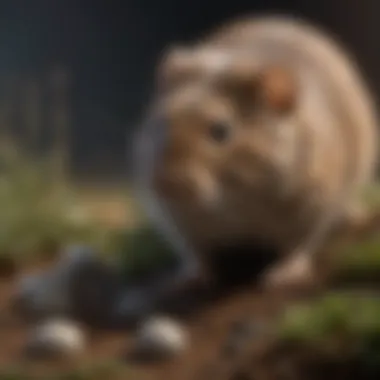
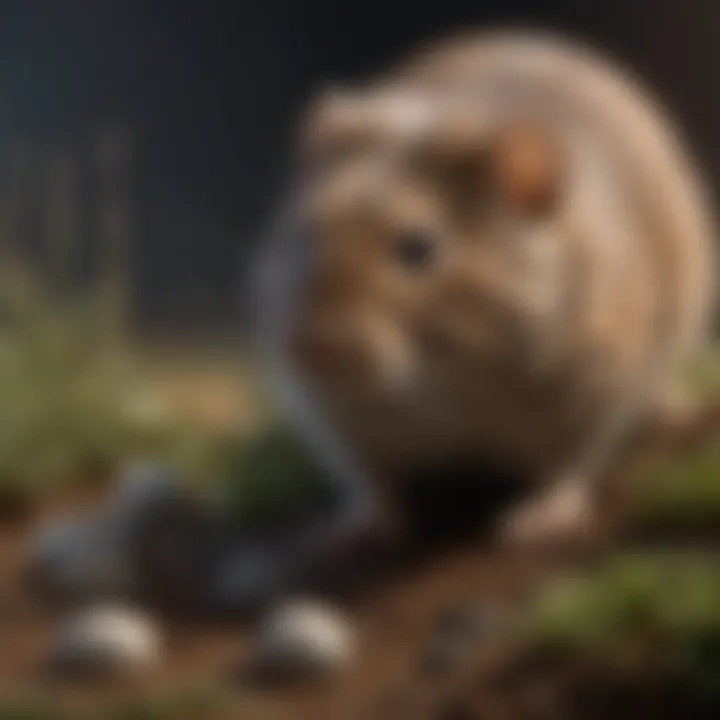
In many regions, there are specific regulations that dictate the methods that can be employed for controlling vole populations. These regulations can cover:
- Permits for Trapping and Baiting: Some areas require permits for certain types of traps or baits. Homeowners should be informed about what is legal to use in their gardens.
- Environmental Considerations: Many regulations are in place to protect local ecosystems. Using certain chemicals or poisons may be restricted to prevent harm to non-target species or nearby wildlife.
- Reporting Requirements: Some jurisdictions require reports on pest control activities, especially if these activities might affect local wildlife.
Failing to adhere to these regulations can result in fines or legal repercussions. Staying informed about legal requirements ensures that pest control measures do not inadvertently cause more issues.
Ethical Implications of Control Methods
When it comes to controlling voles, ethical considerations are just as important as regulatory compliance. Homeowners and managers should reflect on the following:
- Humane Treatment: Using methods that minimize suffering is essential. Traps should be used judiciously to ensure a quick and humane kill.
- Impact on Biodiversity: Methods that harm the environment or other wildlife can lead to broader ecological issues. Selecting eco-friendly deterrents and management strategies are essential to maintaining a balanced ecosystem.
- Public Perception: Ethical pest management practices can influence how the community views the individual or organization. Responsible practices can enhance reputation and trust among neighbors and community members.
"An ethical approach to pest management is not only about compliance but also about responsibility to the community and environment."
Evaluating Successful Vole Deterrent Strategies
Evaluating successful vole deterrent strategies is essential for achieving effective pest management. The goal is to reduce vole populations while minimizing impact on the surrounding environment. Understanding the effectiveness of deterrent methods provides insight into which strategies work best for different situations. Furthermore, a thorough evaluation enables property owners to allocate resources effectively, preventing wastage on ineffective tactics.
Measuring Effectiveness
Measuring the effectiveness of vole deterrents involves observing vole activity after various strategies have been implemented. Several indicators can help assess success, including the following:
- Population Assessment: Conduct regular surveys to estimate vole numbers before and after the implementation of deterrent methods. Noting any significant decreases can indicate success.
- Behavioral Changes: Monitoring changes in vole feeding patterns can also provide insight. If plants remain uneaten or signs of tunneling are reduced, it suggests effective deterrence.
- Damage Reports: Keeping track of the extent of damage in gardens or crops offers a practical measurement. A decline in damage after adopting new strategies reflects positive outcomes.
Combining these approaches gives a fuller picture. It is necessary to ensure that methods are not only effective but also sustainable over time. Adjustments may be needed based on observed results.
Adjusting Strategies Based on Observation
Once data is collected from measuring effectiveness, the next step involves adjusting strategies to optimize results. Observations should inform decisions and modifications in the management approach. Key considerations include:
- Adapting Methods: If certain methods are less effective, explore alternatives aligned with your specific environment. For example, if traps are underperforming, consider trying different designs or placements.
- Timing Adjustments: Seasonal variations can affect vole behavior. Adjusting when to implement certain strategies might improve their effectiveness. For instance, applying barriers before the breeding season can help minimize population growth.
- Feedback Loop: Establish a feedback loop where continuous monitoring informs ongoing strategy adjustments. This proactive approach increases the likelihood of long-term success.
Effective management of voles requires ongoing evaluation and adaptation. The landscape changes, and so should your strategies.
Case Studies in Vole Management
Understanding concrete examples through case studies offers insight into the effectiveness of different vole management strategies. These studies provide real-world applications, showing both successes and challenges faced by individuals and communities in dealing with vole populations. By analyzing these cases, readers can gain relevant knowledge and frameworks to consider when they encounter similar issues.
Residential Experiences
In residential spaces, homeowners often face unique challenges when dealing with voles. One notable case involved a suburban neighborhood where residents struggled with significant damage to their gardens and lawns. Vole tunnels were prevalent, and plants were at risk.
The community collectively decided to implement several strategies. One homeowner shared their experience with companion planting. Planting marigolds and daffodils around vegetable patches created a natural barrier, reducing vole access to more vulnerable plants. This method demonstrated a notable decrease in vole activity over time, showcasing the relevance of integrating plant choices into long-term management strategies.
Additionally, another resident utilized fencing techniques to protect fruit trees. The application of buried wire mesh allowed for effective exclusion of voles. Homeowners found that this combination of barrier methods, along with regular monitoring, enhanced their confidence in managing vole populations. These experiences underline the importance of community efforts and shared knowledge in successful residential management.
Lessons from Agricultural Applications
The agricultural sector offers valuable insights into vole management on a larger scale. A specific case highlighted a farm that faced substantial crop losses due to vole infestations. Farmers initially relied on traditional traps. However, they quickly recognized the need for a comprehensive approach.
The implementation of crop rotation alongside habitat modification proved to be beneficial. By changing the types of crops planted each season, farmers disrupted vole feeding patterns. Additionally, establishing buffer zones with native grasses created habitats for natural predators, such as owls and hawks, thereby reducing vole numbers.
Moreover, the farmers shared that monitoring vole populations using tracking paths helped them adjust management practices as needed. This strategy not only prevented significant crop damage but also demonstrated adaptive practices that are essential in modern agriculture. Lessons drawn from agricultural experiences highlight the necessity for integrated pest management, combining both proactive and reactive measures to achieve sustainability while minimizing vole populations.
Future Directions in Vole Pest Control
Pest control, especially concerning species like voles, is evolving rapidly. Attention to Future Directions in Vole Pest Control is crucial for effective management. As methods adapt, there is a necessity to embrace both emerging innovations and interdisciplinary perspectives in understanding and controlling vole populations.
The increasing urbanization and changes in agriculture present unique challenges. Newly developed strategies can significantly improve effectiveness. Emerging research intertwines biology, technology, and sustainable practices. Therefore, it’s essential for homeowners and gardeners to stay informed about these advancements.
Emerging Trends and Research
Recent studies indicate an intersection of natural and technological tools. Research is focusing on ecological controls that not only deter voles but also promote a balanced environment. For instance, scientists are investigating the potential of using specific plants that repel voles, and this aligns with organic gardening practices.
Additionally, technological innovations like smart traps are gaining traction. These traps can notify users through a mobile application when a vole is caught, ensuring timely removals without the hassle of frequent checks. This trend towards connected devices offers a higher level of monitoring and a proactive approach to management.
"Adopting modern practices ensures that control methods align with ecological values while being effective."
Interdisciplinary Approaches to Management
Effective vole management is not solely rooted in biological understanding. It is becoming increasingly important to integrate insights from various fields. For instance, collaborations between ecologists, urban planners, and pest control specialists reveal the connections between habitat design and vole behavior.
- Habitat Modification: Urban landscape architects can minimize vole-friendly environments by designing areas that discourage their habitation.
- Community Engagement: Educating homeowners on sustainable practices not only reduces voles but fosters community involvement.
- Data Analysis: Utilizing data from wildlife studies can help in predicting vole populations and their movements, leading to more efficient deterrent strategies.
Overall, the future of vole pest control relies on adaptive methods, combining traditional knowledge and innovative research, while remaining mindful of human and ecological health.
Culmination
The importance of the conclusion in this comprehensive guide on vole deterrents cannot be overstated. It serves as a synthesis of the key points discussed throughout the article, reinforcing the significance of effective management strategies for controlling vole populations. A well-structured conclusion not only summarizes the information but also leaves the reader with a clear understanding of the topic's relevance.
Recap of Effective Strategies
In reviewing the effective strategies against voles, it is essential to highlight the various methods available, each with distinct advantages. Traditional methods like fencing and traps have proven beneficial, yet they may require regular monitoring and maintenance. On the other hand, the incorporation of natural deterrents, such as companion planting and essential oils, offers an ecological approach to pest management.
Moreover, technological innovations, including ultrasonic deterrents, present a modern solution that can complement more hands-on methods. It is critical to adopt a flexible mindset, acknowledging that no single strategy can serve all situations. Thus, integrating multiple approaches can enhance the overall effectiveness of vole management.
The Importance of Continuous Learning
Continuous learning plays a vital role in effective vole management. Engaging with the latest research and developments can provide insights into new trends, techniques, and emerging products that can better deter voles. As environments change and pest behaviors evolve, remaining adaptable is crucial for any homeowner or gardener.
Staying informed helps in adjusting strategies based on observed outcomes. This feedback loop ensures that tactics remain relevant and effective. Engaging with communities, whether through online forums like Reddit or local gardening groups, fosters shared learning. It allows individuals to exchange experiences, successes, and failures regarding vole deterrents.
Ultimately, the commitment to continual education empowers homeowners to manage their landscapes effectively, minimizing the impact of voles on their gardens and properties.







